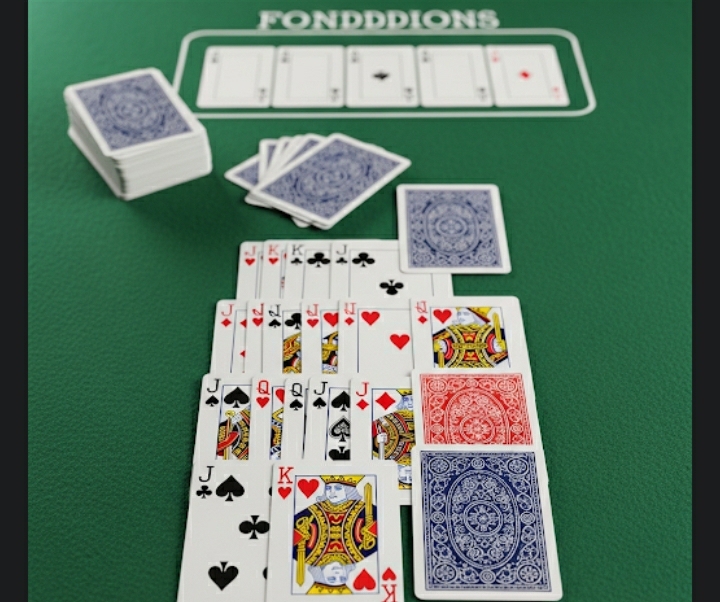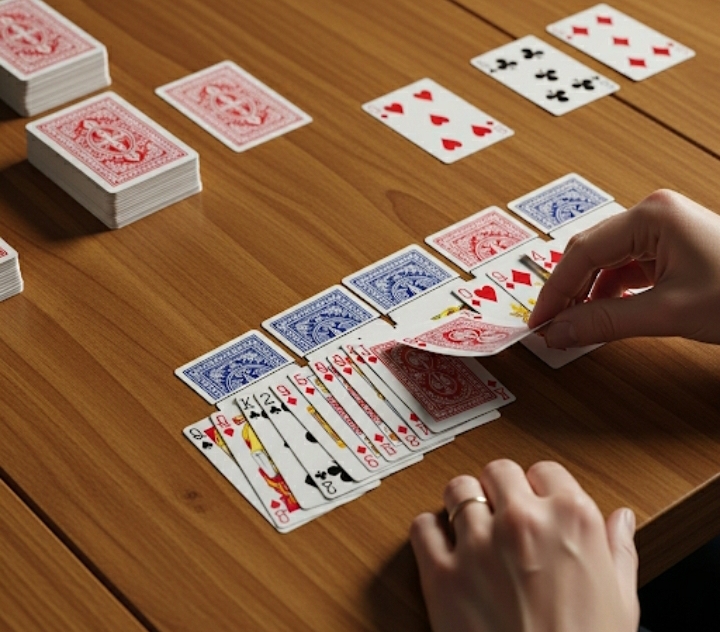Last Tuesday evening, my internet went down during a thunderstorm. No Netflix, no social media, no endless scrolling – just me and my laptop’s basic programs. That’s when I rediscovered the humble Windows Solitaire icon tucked away in my games folder. Three hours later, I was still clicking and dragging cards, completely absorbed in this Classic Solitaire experience that has somehow survived decades of technological evolution.
Classic Solitaire isn’t just a game; it’s a digital comfort food that transcends generations. Whether you’re a Baby Boomer who remembers the original Microsoft version or a Gen-Z gamer looking for a mental break, this nostalgic card game delivers satisfaction in ways that modern gaming often can’t match.
In this article, we’ll explore why Classic Solitaire remains irresistible, dive into its fascinating history, uncover strategies that actually work, and discover why millions still choose this simple card game over flashy alternatives. You’ll also learn about different variations and find out where to play the best versions online today.
The Enduring Appeal of Classic Solitaire
Why We Keep Coming Back
Classic Solitaire occupies a unique space in our digital lives. Unlike competitive games that demand peak performance or story-driven titles requiring hours of commitment, solitaire offers something increasingly rare: meditative gameplay that respects your time.
The beauty lies in its simplicity. Seven columns of cards, four foundation piles, and one clear objective – move all cards to the foundations in ascending order by suit. Yet within this framework exists countless moments of decision-making, pattern recognition, and quiet satisfaction.

Dr. Sarah Mitchell from the University of California’s Psychology Department notes that solitaire activates the same reward pathways as more complex puzzles, but without overwhelming cognitive load. “It’s the perfect balance of challenge and achievability,” she explains in her 2023 research on casual gaming patterns.
The Science Behind the Satisfaction
Research shows that Classic Solitaire triggers what psychologists call “flow state” – that magical zone where time seems to disappear. The game’s structure provides constant micro-rewards: revealing hidden cards, making successful moves, and watching stacks grow in the foundation piles.
This neurological response explains why a “quick game” often turns into an hour-long session. Your brain craves the next small victory, the next card reveal, the next strategic breakthrough.
A Brief History: From Physical Cards to Digital Dominance
The Physical Origins
Classic Solitaire’s roots trace back to 18th-century Europe, where it was called “Patience” – a fitting name given its meditative qualities. The Klondike variation we know today emerged during the 1890s gold rush, possibly named after the famous Klondike region where prospectors needed entertainment during long winter nights.
Microsoft’s Game-Changing Move
Everything changed in 1990 when Microsoft included Solitaire with Windows 3.0. Suddenly, millions of office workers worldwide had access to this addictive card game right on their computers. Microsoft’s version became the gateway drug for PC gaming, introducing mouse controls to users who had never clicked and dragged before.
The numbers are staggering: Microsoft Solitaire has been played over 35 billion times across all platforms, making it one of the most-played video games in history.
Mastering Classic Solitaire: Strategies That Actually Work
Foundation-First vs. Tableau-First Approaches
Most players instinctively move cards to foundations immediately, but experienced solitaire enthusiasts know better. The key lies in building your tableau (the seven main columns) first, creating more movement options before committing cards to the foundation piles.
Pro tip: Only move cards to foundations when it doesn’t block potential moves in your tableau. An Ace of Hearts might look tempting up there, but if you need that foundation space for maneuvering, leave it in play.
The Draw Strategy Debate
| Draw Method | Win Rate | Pros | Cons |
|---|---|---|---|
| Draw One | 79% | Easier planning, see all cards | Fewer options per turn |
| Draw Three | 32% | More challenging, faster gameplay | Requires advanced strategy |
Reading the Hidden Cards
Classic Solitaire success often depends on managing cards you can’t see. Before making moves, consider which hidden cards you’re potentially blocking. That King sitting on a large stack might be hiding crucial cards you’ll need later.

Modern Variations and Where to Play
Digital Evolution
Today’s Classic Solitaire options extend far beyond Microsoft’s original version. Web-based platforms offer enhanced graphics, undo functions, and even multiplayer competitions. Mobile apps have adapted the classic formula with touch-friendly interfaces and cloud save features.
Popular platforms include:
- Microsoft Solitaire Collection – The official evolution with multiple game modes
- Google Solitaire – Clean, no-download browser version
- Solitaire.org – Classic experience with customizable themes
The Social Solitaire Revolution
Surprisingly, Classic Solitaire has embraced social features. Leaderboards, daily challenges, and achievement systems transform this solitary experience into a community activity. Players share screenshots of impressive wins and compete for fastest completion times.
The Therapeutic Benefits of Classic Solitaire
Stress Relief in Digital Form
Mental health professionals increasingly recognize solitaire’s therapeutic value. The repetitive, goal-oriented gameplay provides structure for anxious minds while offering a healthy escape from daily stressors.
Unlike action games that elevate heart rate, Classic Solitaire promotes a calm, focused mental state. It’s become a digital equivalent of knitting or meditation for many players.
Cognitive Benefits
Regular solitaire play exercises several cognitive functions:
- Pattern recognition – Identifying card sequences and potential moves
- Strategic planning – Thinking several moves ahead
- Working memory – Tracking card locations and possibilities
- Attention to detail – Spotting available plays among complex layouts
Why Classic Solitaire Beats Modern Alternatives
Timeless Design Principles
In an era of loot boxes, microtransactions, and notification-hungry games, Classic Solitaire represents pure game design. No artificial engagement mechanics, no pay-to-win schemes – just you, 52 cards, and logical problem-solving.
This honesty creates trust between player and game. You know exactly what you’re getting: a fair challenge based on skill and luck in equal measure.
The Perfect Productivity Break
Classic Solitaire excels as a mental palate cleanser. Unlike social media scrolling or video watching, a quick solitaire game actually refreshes your mind for returning to work. The focused gameplay clears mental clutter without adding new information to process.
Conclusion
Classic Solitaire endures because it solves a fundamental human need: the desire for achievable challenges that respect our time and intelligence. In our hyperconnected world, this nostalgic card game offers something increasingly precious – a moment of peaceful focus where the only notifications are the satisfying sounds of cards sliding into place.
Whether you’re rediscovering solitaire after years away or introducing it to someone new, remember that its magic lies not in fancy graphics or complex mechanics, but in the simple satisfaction of turning chaos into order, one card at a time.
Ready to test these strategies? Fire up your favorite solitaire game and see if you can beat your personal best. Share your highest win streaks in the comments below, or tell us about your most memorable solitaire moment – we’d love to hear how this timeless game has touched your life.
Frequently Asked Questions
What’s the difference between Solitaire and Klondike?
Klondike is actually the specific name for what most people call “Classic Solitaire.” There are hundreds of solitaire variations, but Klondike became synonymous with solitaire thanks to Microsoft’s Windows inclusion. Other popular variations include Spider, FreeCell, and Pyramid solitaire.
What’s the actual win rate for Classic Solitaire?
Studies suggest that approximately 79% of Klondike Solitaire games are theoretically winnable with perfect play. However, the average player wins only about 43% of games due to suboptimal moves and the challenge of seeing all possibilities several moves ahead.
Can playing Classic Solitaire improve cognitive function?
Yes, regular solitaire play can enhance pattern recognition, strategic thinking, and working memory. A 2022 study published in the Journal of Cognitive Enhancement found that adults who played card games like solitaire for 15 minutes daily showed improved attention span and problem-solving abilities over a 12-week period.
Is there a “best” strategy for winning more solitaire games?
The most effective strategy combines building your tableau before moving cards to foundations, always revealing face-down cards when possible, and thinking at least two moves ahead. Avoid moving cards to foundations too early, as this can block future plays and reduce your winning chances.
Why do some people find Classic Solitaire addictive?
Classic Solitaire triggers the brain’s reward system through frequent small victories and the promise of “just one more game.” The combination of skill and chance creates what psychologists call a “variable reward schedule” – the same mechanism that makes slot machines compelling, but in a healthier, skill-based format.
Where can I play the most authentic Classic Solitaire experience online?
For the most authentic experience, try Microsoft Solitaire Collection (available on Windows and mobile), Google Solitaire (accessible by searching “solitaire” on Google), or Solitaire.org for a clean, ad-free browser version that closely matches the original Windows game.
Sources:
- Mitchell, S. (2023). “Cognitive Load and Casual Gaming Patterns.” University of California Psychology Department Research Papers.
- “The History and Impact of Microsoft Solitaire.” Gaming History Institute.
- Johnson, R. et al. (2022). “Card Games and Cognitive Enhancement in Adults.” Journal of Cognitive Enhancement, Vol. 15, Issue 3.